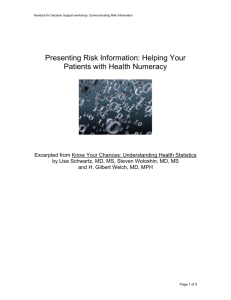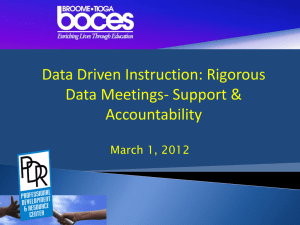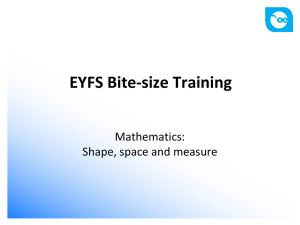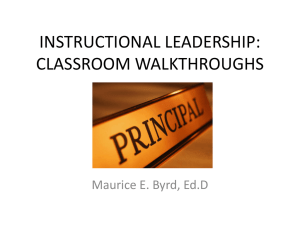SYLLABUS - College of Engineering and Computer Science
advertisement
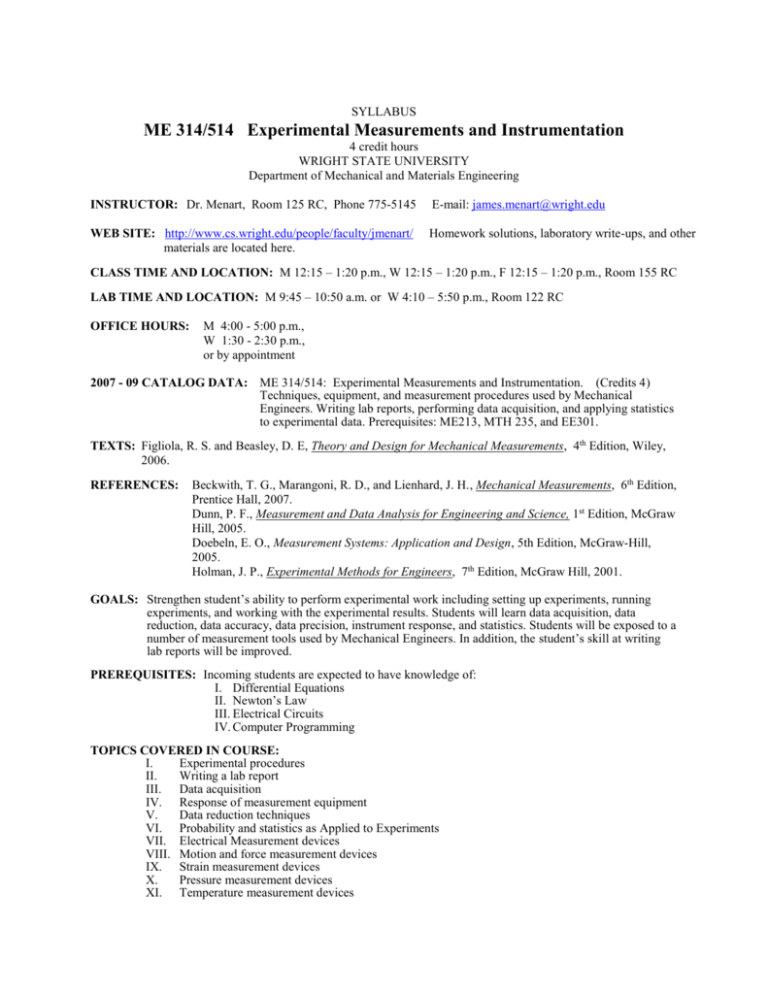
SYLLABUS ME 314/514 Experimental Measurements and Instrumentation 4 credit hours WRIGHT STATE UNIVERSITY Department of Mechanical and Materials Engineering INSTRUCTOR: Dr. Menart, Room 125 RC, Phone 775-5145 E-mail: james.menart@wright.edu WEB SITE: http://www.cs.wright.edu/people/faculty/jmenart/ materials are located here. Homework solutions, laboratory write-ups, and other CLASS TIME AND LOCATION: M 12:15 – 1:20 p.m., W 12:15 – 1:20 p.m., F 12:15 – 1:20 p.m., Room 155 RC LAB TIME AND LOCATION: M 9:45 – 10:50 a.m. or W 4:10 – 5:50 p.m., Room 122 RC OFFICE HOURS: M 4:00 - 5:00 p.m., W 1:30 - 2:30 p.m., or by appointment 2007 - 09 CATALOG DATA: ME 314/514: Experimental Measurements and Instrumentation. (Credits 4) Techniques, equipment, and measurement procedures used by Mechanical Engineers. Writing lab reports, performing data acquisition, and applying statistics to experimental data. Prerequisites: ME213, MTH 235, and EE301. TEXTS: Figliola, R. S. and Beasley, D. E, Theory and Design for Mechanical Measurements, 4th Edition, Wiley, 2006. REFERENCES: Beckwith, T. G., Marangoni, R. D., and Lienhard, J. H., Mechanical Measurements, 6th Edition, Prentice Hall, 2007. Dunn, P. F., Measurement and Data Analysis for Engineering and Science, 1st Edition, McGraw Hill, 2005. Doebeln, E. O., Measurement Systems: Application and Design, 5th Edition, McGraw-Hill, 2005. Holman, J. P., Experimental Methods for Engineers, 7th Edition, McGraw Hill, 2001. GOALS: Strengthen student’s ability to perform experimental work including setting up experiments, running experiments, and working with the experimental results. Students will learn data acquisition, data reduction, data accuracy, data precision, instrument response, and statistics. Students will be exposed to a number of measurement tools used by Mechanical Engineers. In addition, the student’s skill at writing lab reports will be improved. PREREQUISITES: Incoming students are expected to have knowledge of: I. Differential Equations II. Newton’s Law III. Electrical Circuits IV. Computer Programming TOPICS COVERED IN COURSE: I. Experimental procedures II. Writing a lab report III. Data acquisition IV. Response of measurement equipment V. Data reduction techniques VI. Probability and statistics as Applied to Experiments VII. Electrical Measurement devices VIII. Motion and force measurement devices IX. Strain measurement devices X. Pressure measurement devices XI. Temperature measurement devices HOMEWORK: Homework will be assigned in class and on most occasions is due one week after it is assigned. Late homework will receive a 50% grade reduction and late homework that is a duplicate copy of the posted solutions will receive an 80% grade reduction. Students may work together on their homework, but each student must contribute to the process and individually write out their solution. Use of the solution manual is not allowed for homework until after the due date. Problems should be done such that there is a Given, Find, and Solution. The Given should contain all the information stated in the problem in abbreviated form. Many times it is best to make a sketch of the problem and place the given information on this sketch. Do not recopy the problem statement! The Find section should briefly state the quantities being sought. Lastly, the Solution section should contain an orderly display of how you solved the problem. The solution should be such that it is easy for someone else to understand how you deduced your answers. All important equations should be written out in symbolic form, as well as showing the substitution of numbers into the equation. Assumptions should be clearly stated and any additional figures required should be shown. Put a box around your final answers. The use of commonly used symbols to state the Given, Find, and Solution information is encouraged. EXPERIMENTS: The experiments will be designed such that the students have to perform them. It is hoped that I can arrange the labs so that each person has their own equipment. It may take more than the 2 hour lab section to finish the required experiment. The student will be able to come into the laboratory on their own to finish the experimental work. There will be some kind of laboratory write-up on every experiment. EXAMS: One midterm and one final will be given. On a test the student is responsible for the material in the lecture sessions as well as the laboratory sessions. Thus each individual student is responsible for what occurs in the lab. All exams are to be the student’s own work and no collaboration is allowed. ATTENDANCE: Performance of every lab is required. GRADING: The grading for the course is as follows: Pretest - 5% Homework - 10% Midterm - 15% Final - 25% Formal Lab Reports - 30% Informal Lab Reports - 15% undergraduate students - 10% graduate students Independent Experiment - 5% graduate students The student will be awarded the highest grade according to the following scale: A - 90% or more of the total points B - 80% or more of the total points C - 70% or more of the total points D - 60% or more of the total points F - less than 60% of the total points GRADUATE STUDENTS: In addition to the course work described above, students taking the course for graduate credit will also be required to design and execute an experiment to demonstrate one of the principles learned in class. The experiment must be cleared with the instructor by the 5th week of class. This experiment will count for 10% of their informal lab report grade. ACADEMIC INTEGRETY: All work in this course must be completed in a manner consistent with WSU Policy or Code of Academic Responsibility and Conduct. Violation of this code will result in a penalty to be determined by the instructor to fit the gravity of the offense and the circumstances of the particular case. The instructor may: 1) fail the student for the particular assignment or test, 2) give the student a failing grade in the course, 3) recommend that the student drop the course, or 4) bring the case in front of the University Student Honesty or Discipline Committee. TENTATIVE SCHEDULE PERIOD DATE TOPIC Week 1 1 2 3 Lab 1/7 1/9 1/11 No Lab Basic Concepts of Measurements Basic Concepts of Measurements How to Write a Lab Report Week 2 Lab LabView Orientation 4 5 6 1/14 1/16 1/18 PRETEST, Data Acquisition Week 3 7 8 9 Lab 1/21 1/23 1/25 No Lab Martin Luther King Jr. Holiday – No class Static and Dynamic Characteristics of Measurement Systems Static and Dynamic Characteristics of Measurement Systems Chapter 2 Chapter 2 Week 4 10 11 12 Lab 1/28 1/30 2/1 Data Acquisition Measurement Systems Behavior Measurement Systems Behavior Measurement Systems Behavior Handout Chapter 3 Chapter 3 Chapter 3 Week 5 13 14 15 Lab 2/4 2/6 2/8 Fourier Transforms Statistics Statistics Statistics Handout Chapter 4 Chapter 4 Chapter 4 Week 6 16 17 Lab 2/11 2/13 Dynamic Response Uncertainty Uncertainty Handout Chapter 5 Chapter 5 2/15 EXAM - I, Week 7 19 20 21 Lab 2/18 2/20 2/22 Statistics and Uncertainty Lab Analog Electrical Devices Temperature Temperature Week 8 22 23 24 Lab 2/25 2/27 2/29 Temperature Measurement Temperature Strain Strain Week 9 25 26 27 Lab 3/3 3/5 3/7 Strain Measurement Pressure,Velocity, and Flow Pressure,Velocity, and Flow Pressure,Velocity, and Flow Week 10 28 29 30 Lab 3/10 3/12 3/14 Pressure Measurement Force and Displacement Force and Displacement Force and Displacement Final 3/19 FINAL EXAM, 1:00 – 3:00 p.m., Chapters 1-12, Appendix A, Room 155 RC 18 ASSIGNED READING Data Acquisition Data Acquisition Chapter 1 Chapter 1 Appendix A Handout Chapter 7 Chapter 7 Chapter 7 Handout Chapters 1, 7, 2, 3, 4 Handout Chapter 6 Chapter 8 Chapter 8 Handout Chapter 8 Chapter 11 Chapter 11 Handout Chapters 9 and 10 Chapters 9 and 10 Chapters 9 and 10 Handout Chapter 12 Chapter 12 Chapter 12





